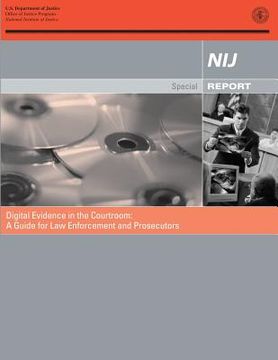Synopsis "Digital Evidence in the Courtroom: A Guide for Law Enforcement and Prosecutors"
The rapid, widespread adoption of new technology often outpaces society's development of a shared ethic governing its use and the ability of legal systems to deal with it. The handling of digital evidence is a perfect example. Although computers have existed for more than 60 years, it has been only since the late 1980s, as computers have proliferated in businesses, homes, and government agencies, that digital evidence has been used to solve crimes and prosecute offenders. For example, for years, evidence in child pornography cases was found in magazines and consisted of traditional photographs. During the mid-1990s, the Internet changed that. Now it is rare to find a child pornography case that involves anything other than digital images and printouts of those images. Once the province of "computer crime" cases such as hacking, digital evidence is now found in every crime category. Too often, though, law enforcement agencies and the judiciary are ill-prepared to deal with the issues created by the increasing use of this evidence. Some judges, attorneys, and jurors may harbor doubts about the reliability and significance of digital evidence. To prevent misunderstandings at trial, concepts must be explained in simple terms with carefully selected analogies and visual aids. Prosecutors should not assume that investigators understand how to avoid creating confusion at trial. Technically sophisticated investigators or examiners should not assume that prosecutors fully grasp the problems encountered in recovering and analyzing the evidence. Prosecutors, investigators, and examiners should share their knowledge of technical problems and discuss strategies. Addressed to law enforcement and prosecutors, this report is subject to several important limitations and, therefore, is only a guide. First, it identifies and briefly addresses some of the key issues related to digital evidence. More extensive treatment can be found in resources referenced throughout the guide and in appendix A. Second, many issues discussed are subject to laws that vary from jurisdiction to jurisdiction. Third, the technology and law in this area are rapidly evolving. Finally, this guide does not address the acquisition of digital evidence from outside the United States.

